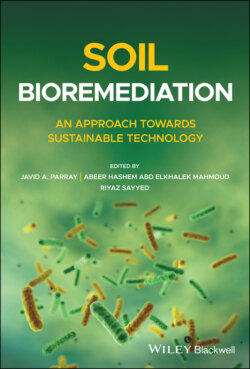Читать книгу Soil Bioremediation - Группа авторов - Страница 49
3.3 Application of Laccase
ОглавлениеLaccases play an important role in: the food industry, the paper and pulp industry, the textile industry, soil bioremediation, and biodegradation of environmental phenolic pollutants. These enzymes are used for pulp delignification, pesticide or insecticide degradation, waste detoxification, textile dye transformation, food technological uses, and biosensor and analytical applications (Figure 3.2).
Figure 3.2 Applications of laccase.
Recently laccases have been efficiently applied to nanobiotechnology due to their ability to catalyze electron transfer reactions without additional cofactor. The technique for the immobilization of biomolecule such as layer‐by‐layer, micropatterning, and self‐assembled monolayer technique can be used for preserving the enzymatic activity of laccases [14]. Many micropollutants present in municipal wastewater, such as pharmaceuticals or biocides, are not easily removed in conventional biological treatments, resulting in a constant input into the aquatic environment. As these compounds are designed to be biologically active, they can affect sensitive aquatic organisms even at low concentrations. One potential means to reduce the amounts released to the environment is to improve their biodegradation in a post‐treatment step using microorganisms that produce oxidative enzymes such as laccases. Due to their wide range of substrates and the sole requirement of oxygen as the cosubstrate, laccases appear to be a promising biocatalyst to enhance the biodegradation of micropollutants in wastewater in a complementary treatment step [14].
